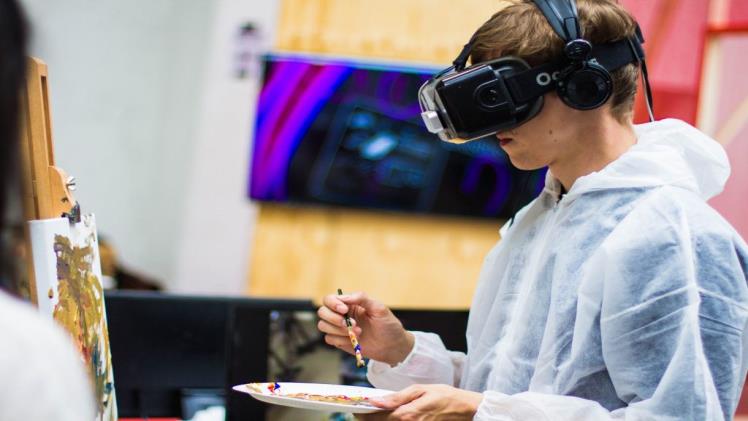Virtual reality comes in three varieties: Non-Immersive Virtual reality, Semi-Immersive VR and Immersive VR. Each type has its own advantages and uses.
The most prevalent and widely used type of virtual reality is non-immersive. This relies on computers, video game consoles, and input devices to create an environment.
Cinematic VR
Cinematic VR is a type of virtual reality that allows viewers to view stories through headsets. This type of technology may offer various features like 360-degree cameras, positional tracking, branching stories, interactive overlays and interfaces, audio or clip triggers, gestures, as well as full CG integration.
One of the Metaverse primary challenges VR filmmakers face is creating an environment that feels authentic to a real-world space rather than one created in a computer. To do this, cameras must move and capture all movement in the scene so actors can move around freely without feeling trapped inside a machine.
Another challenge faced by filmmakers when creating VR films is that viewers’ perspectives can shift while they watch. As such, traditional techniques for guiding their attention in filmmaking no longer work and must now find ways to draw their viewers’ focus to specific points in the story without interfering with their freedom of movement or detracting from its overall narrative.
Forced rotation, in which viewers continuously move the VR world towards their region of interest can cause simulator sickness; on the other hand, diegetic guiding – in which users are encouraged to look at their – does not cause this effect.
Cinematic VR still manages to deliver some unique effects despite these difficulties. For example, 11:57, a VR experience called 11:57, blends simulated wind and rain with an intense horror movie. Plus, Lucy the ghost appears randomly throughout the film at four different locations.
These effects can be powerful and make a VR experience feel much more real than regular movies. Unfortunately, they also distracting and may not be suitable for all viewers; until we figure out how to better handle them, these types of effects may only be found at science centers or theme parks.
Immersive VR
Immersive VR is a type of virtual reality that completely immerses users into the computer-generated world. This effect is typically achieved through head-mounted displays (HMDs). This provides users with the feeling they are physically present in their environment and helps reduce motion sickness.
In addition to entertainment, immersive VR has many applications in education and healthcare. Doctors and hospitals have been using VR therapy for patients to help them relax and focus on their treatment – it’s an effective way for them to distract themselves from any pain or other issues they may be dealing with.
Educational institutions have also begun utilizing immersive technology to make learning more interesting and enjoyable. A recent study revealed that this type of approach can have a beneficial effect on students’ attention and engagement levels.
Museums are increasingly using virtual spaces to recreate old works of art, allowing visitors to enjoy them from a unique perspective without having to travel far away. This type of immersive technology is becoming increasingly popular in museum collections, particularly for historical or unique pieces.
Ecommerce and tourism can benefit from virtual tours of various locations. Companies like Matter port have developed technology to create detailed immersive experiences of homes and buildings that people can view through a headset.
Immersive technologies in business can be beneficial to supporting growth, streamlining operations, developing employees’ skillsets and connecting with customers. But before adopting them into your organization, it is essential to comprehend how these tools function and how they may be applied.
Conclusion
One of the key challenges when introducing immersive technologies into your business is privacy and data controls. This is due to the increased amount of tracking and data collection that occurs in these environments, including facial expressions and eye-movements. Therefore, finding a solution that provides extra protection between your organization and customers is necessary in order to guarantee that your brand remains secure.
